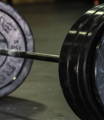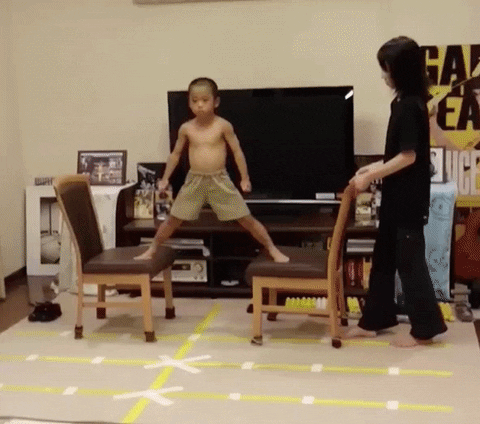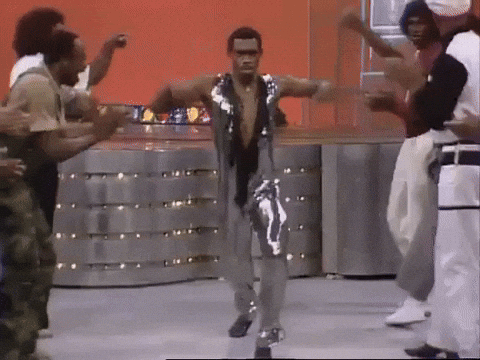Arm Day / Leg Day / What Else? Training Splits for Athletes
FREE SPEED & POWER WORKOUT!
Download by entering below

Arm Day / Leg Day / What Else?
Training Splits for Athletes
We want to first go over what exactly are training splits and what a training split even means so that we can give the means to implement the best training splits to reap the athletic gains. So let’s start right away with what training splits are.
From a training split perspective, the idea circulates what we are doing on a day-by-day basis. So if I am going into the weight room and looking at the training split for the week I’ll begin by looking at Day 1. Day 1 will be a predetermined workout that is based upon a leg day or an upper-body day. The following day, the split will teach us what needs to follow. So if Day 1 is an upper-body day, Day 2 can be a lower-body pulling day and Day 3 will be a training rest day.
The training split shows us the frequency we will be performing specific movements, targeting specific areas or groups for actual gains in the weight room. Training splits that include 3-6 days, like ones found in Peak Strength, are going to be the most popular and effective to build your routine around.
6 Days A Week, One Muscle Group A Day
I learned this training split from reading Bill Pearl back when I was a teenager. I would go to the local bodybuilding gym and would train six days a week training one group of muscles each day. Day 1 would be a chest day. Day 2 would be a back day. Day 3 would be a leg day. Day 4 would be a shoulder day. Day 5 would be bize and trize and Day 6 would be hitting calves. The training split had us hitting a specific muscle group each day, a classic old-school bodybuilding program. Literally just breaking it down by muscle group.

3 Day Total Body Training
This training split is still pretty popular and consistent at the collegiate level. It is also a training split that a lot of coaches when first dabbling in programming will utilize. For example, Day 1 may be a dumbbell snatch with a back squat and a bench press followed by a day off. Day 2 may then be a power clean with walking lunges and then dumbbell upper-body work and then rest the next day. Day 3 then might be a dumbbell snatch again or trap bar deadlift, followed by some step-ups with upper body work following.
This training split has some areas that throw up red flags but it is a three-day total body split with merit in areas.
Prominent Bodybuilding Split
Prominent bodybuilding split where Day 1 where we can do chest and triceps, Day 2 leg work, Day 3 back and biceps, and then take a day off. Day 4 might then be getting into some shoulder work with Day 5 being another leg day followed by another day off.
This is a more prominent bodybuilding split we see.
That said, all of these three different training splits can morph into whatever is consistent for a person’s gym or schedule. All the splits have their shortcomings and all the splits have their positive attributes.
One thing I never understood is why do chest and triceps are on the same day? Why not do chest and biceps so we can superset movements more effectively? Or why do back and biceps? Do back and triceps work for antagonist muscle groups.

Establishing Splits
We have seen that in research, getting ten to twenty sets per group of muscles each week we will get some hypertrophy and stimulation to force adaptation. So ten to twenty sets of leg work, upper bodywork, and technical coordination work each week is the first box we need to check off when deciding on training splits.
The next key is looking for some semblance of organization. A semblance of organization allows us to know each day what we are doing in the gym to prepare, set goals, and show up to achieve.
Once the training is organized, we can start to see a pattern of adaptation. We can feel how different movements impact us later in the week. From there we can start to plan and program how to peak for specific sports. If we don’t understand this or take notes on this type of patterning we can inhibit a big-time peak.
Essentially, we are establishing a performance rhythm. I like to equate this to the circadian rhythm, the ebbs and flows the body goes through between waking and sleeping; it brings out the energy levels throughout the day. Training splits establish the performance rhythm that allows athlete and coach to elicit the monster response needed in competition for whatever sport is being pursued.

Key Splits To Use: 3 Day Split
I am privileged to be in conversation with Penn State football’s head strength coach, Chuck Losey, one of the best in the game, and he talked to me about his athletes only being able to train three days a week because of the competition schedule.
I want to start by saying I am not a huge fan of training three days a week. But I also understand that time and scheduling can be an issue. With that caveat put forward, three days a week will suffice.
Day 1 needs to be a big-time leg day. The first lift that needs to be done is a technical coordination lift, like a clean. The second lift should be an absolute strength lift, like a back squat. That then needs to be followed by really prominent accessory work.
Day 2 needs to be an upper-body day. Remember, we want to get ten to fifteen sets on the upper body to elicit a solid response for transference to the competitive field.
Now we take the next day off. Think of the day off falling on a Wednesday.
Day 3, on a Thursday, we want to start with some good speed work, like power cleans or power snatches. Follow that with a decent strength lift like a front squat or single-leg squat. We would then follow that up with a lot of upper body bodybuilding work. Think of Day 3 as a dynamic molding day.
Key Splits To Use: 4 Day Split
The 4-day training split is similar to the 3-day split, but we will add in one key day that I believe helps transfer over to the athletic field. The 4 day training split is also the most common that we program for our athletes and recommend for athletes that are using Peak Strength.
Again, Day 1 focuses on big-time leg strength. Technical coordination movement, absolute strength movement superset with some dynamic trunk control work, and then finish out the day with some accessories. This might be a Monday.
Day 2 is a big strength day for the upper body. Start with a technical coordination movement, like a behind-the-neck jerk, then an absolute strength movement, like a bench press, and then follow it all up with some bodybuilding work. The focus is pushing the key upper body lifts that will transfer to the specific sport being trained for. This might be a Tuesday.
Day 3 is where we get more creative. This is going to be the athletic day. I recommend this entire day is devoted to being more athletic, more reflexive, and being a big-time athlete to focus on chaos coordination. This could land on Wednesday.
Rest on Thursday.
Day 4 is then a dynamic total body day. Start with a technical coordination movement like a power snatch, followed by unbroken front squats at like 60%. We then might go and do incline pad bench or unbroken incline bench reps. We do a full-body day with the mixing of the lower and upper body. Finish it off on Friday.

Key Splits To Use: 5 Day Split
Here is where I believe the best training split that every athlete can benefit from is the five-day training split. The five-day training split is unique because we can start to play around with the adaptation rhythm and we can see more clearly how athletes react.
Again, Day 1 is a big lower body strength day. Day 2 is a big upper body strength day, pushing the specific lifts for our chosen sport. Day 3 is going to be the athlete day where we train chaos coordination by doing bilateral and unilateral work to help improve stability to carry all the work in the weight room over to the competitive field.
Day 4 is where things get very interesting. Here is where coaches can begin to study their athletes and see how they handle different aspects of training. Day 4 is a dynamic leg day. We are looking for speed work, better technique, and logical intent actions from the athletes. We want athletes to embrace technical coordination movements through good speed, posture, and technique.
On Day 4, a dynamic day, in-season this will ideally be strictly dynamic work. If we are out of season, we can start to test athletes by having them do one dynamic movement and then do two or three bodybuilding-based movements through more volume and sets to hit up some myofibrillar hypertrophy. Day 4, out of season, we can start to stimulate some bodybuilding or hypertrophic gains to build the contractile structure of the muscles to lead to more power output later on from the size gain of the muscle.
Day 4 is a day where the training split can be played around with based on the time of year and the type of athlete being dealt with. Notice how the athlete handles both volume and intensity.
Day 5 will then be an upper-body dynamic day. It can be a behind-the-neck push jerk or a linebacker split jerk. In season, we want to do speed work that is much more dynamic. But don’t forget, if we are out of season, we can do more bodybuilding work, especially on Day 5 when athletes are more fatigued at the end of the week. Chasing that pump helps athletes feel good, helps break up the monotony, and prevents that overtraining feeling.

Recap
I believe the 5-day training split as written above is the absolute best way to get the 10 to 20 sets per group of muscles. Remember, it is okay to squat twice a week on this training split. It is also okay to not back squat for an entire program if the focus is on front squats or single-leg squats. People think and get concerned that they have to hit every single muscle group every single week. But if we are training more compound movements on days 1, 2, 4, and 5, everything will be taken care of and help with the transfer of training when focusing on athletic development.
Training splits are important because we want to see the adaptation curve of each athlete to figure out their performance rhythm. Knowing an athlete’s performance rhythm helps layout exercises more effectively and increases the transfer of training from the weight room to the competitive, athletic environment.
If you want a program that adapts to your training schedule, sign up for the Peak Strength app for free today and get personalized programming for your sport or goal.
Related Posts
Blog Topics

Yo, It's Dane
Welcome to the Garage Strength Blog, where it is my goal to provide you with the experience and knowledge I've gained in the strength and conditioning world over many years of learning from both successes and failures. I train elite-level athletes in a multitude of sports from the high school to professional levels, already producing 5 Olympics and 30+ National Champions. If you want to be the next champion I train, check out my strength programs below!
Start Training With Me

Join for free educational videos EVERY WEEK on strength coaching and athletic performance




